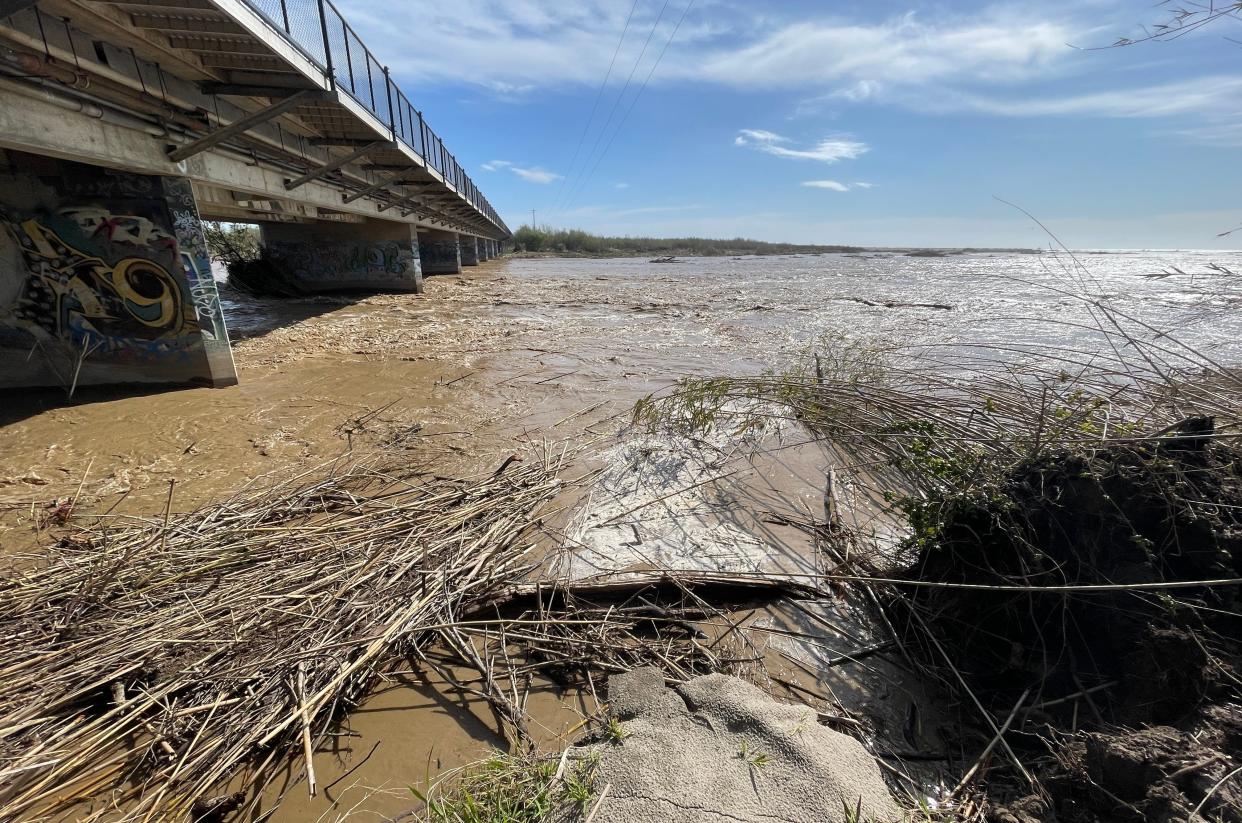Eco-tip: Let rain flow down for recharge

In an area so eager for water most of the year, why do we let our rare rainfall flow into the ocean?
In the case of our local waterways, from the Ventura and Santa Clara rivers to Calleguas Creek, the answer is related to environmental protection.
Raising dams on waterways and rerouting rivers into reservoirs was an old way of planning for urban and agricultural use of resources. Now, environmental regulations reflect our knowledge of downstream consequences, from the loss of fisheries to the erosion of silt-starved shorelines.
However, we are also missing out on another area of rainfall we have the legal authority, the environmental mandate and the technical ability to capture.
Much of the rain falling on our developed areas runs off to the ocean because of how saturated our watersheds become after heavy rains and due to the lack of permeable areas in our urban communities, according to Dan Drugan, manager of resources for Calleguas Municipal Water District.
The saturation problem occurs when water doesn't have enough time to percolate into local aquifers. Soil acts like a soaked sponge. If soil becomes too saturated with water, additional flows just run off the surface, Drugan said.
People can help, he said, by viewing their homes as a watershed and considering ways to improve stormwater capture and retention.
For capture, websites of local water purveyors offer rebates for the purchase of rain barrels and cisterns used to store rainwater channeled from rain gutter downspouts. Purveyors for areas receiving water from the Metropolitan Water District offer rebates and other programs through a consolidated website at socalwatersmart.com under the "rebates" tab.
Capture is a limited option. For example, my rain barrels fill quickly and there is often another rain before my garden dries enough to use the saved water.
Water retention is a more comprehensive strategy, at least in areas where heavy clay soils don't prevent water from reaching underground aquifers. In the words of the Surfrider Foundation’s Ocean Friendly Garden program, use your landscape to “slow, spread and sink” water. The State Water Board, at waterboards.ca.gov, lists solutions in the category of “low-impact development” by entering "LID" in the site's search bar.
Putting a “LID” on water waste in this way can include contouring land with bioswales, using rocks to slow water flows along drainage areas and using mulch and soil amendments to prevent flow-inducing hardened ground.
Reducing impermeable surfacing, like concrete, is also a solution. Instead, permeable surfaces, which allow percolation of water, can enable water to drain into underground storage. Gardens and open space, especially when covered with mulch, are obvious alternatives to concrete, but even hardscape includes options for permeability.
Todd and Gina Vasquez-Housley have used two types of permeable systems on several residential projects, including at their home in the Ventura River Valley. For driveways and parking areas, they installed precast concrete lattice pavers and laid permeable concrete.
They filled the voids in some lattice pavers with sand and gravel and planted ground-covering plants in others. They made permeable concrete using one of many online recipes you can find with a “make permeable concrete” search. Generally, permeable concrete does not contain sand, so it hardens with structural voids large enough for water to pass through. Some recipes use brick chips and some use rock or pea gravel.
House Digest, an online magazine, recently featured articles on eco-friendly methods for repaving a driveway. Among the suggestions for pervious surfaces were gravel, natural stone pavers and aggregate, made from crushed concrete. Interlocking concrete pavers can also be laid to allow percolation.
Reducing the flow of water down city streets, into storm drains and out to the ocean also has another benefit. Runoff can pick up chemicals, trash and bacteria, carrying those pollutants to waterways and beaches.
When water instead percolates through the ground, it is naturally filtered and cleaned, sometimes recharging our natural groundwater supplies.
David Goldstein, an environmental resource analyst with the Ventura County Public Works Agency, can be reached at 805-658-4312 or david.goldstein@ventura.org.
This article originally appeared on Ventura County Star: Eco-tip: Let the rain flow down for a recharge

